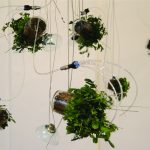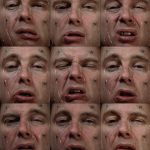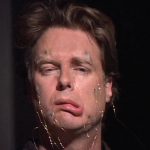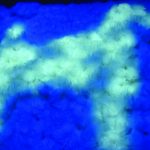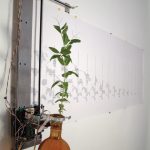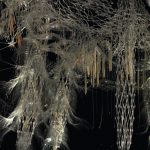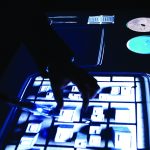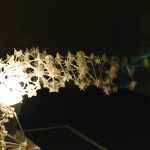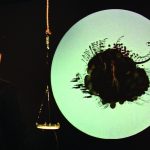SIGGRAPH 2009: BioLogic: A Natural History of Digital Life
Art Show Overview:
Network your senses.
_______________________________________________________________
The artworks assembled for BioLogic: A Natural History of Digital Life explore what can happen when biological forms and life processes encounter digital code and devices. A curious mixture of natural and electronic components in the exhibition recalls the idio-syncratic combinations of artifacts one would have seen in 17th-century cabinets of wonder. Another parallel for the exhibition could be Deleuze and Guattari’s conception of a plateau. They describe a plateau as “a continuous self-vibrating region of intensities,” where things are connected and related by proximity but never align to an orientation or achieve a collective end. The objects and installations in BioLogic query similar topics, but do so with distinct approaches and to marvelously divergent ends.
The exhibition’s enigmatic character became apparent late in the submission review process when jurors were finalizing their selections. The six jurors were asked to map the themes and associations suggested by the works under consideration in order to organize them around common characteristics and conceptual relevance. So with “BioLogic” in the center of a whiteboard, arrows easily extended to gardening, arboretum, and differentiation. From there thoughts moved to landscape, terra-forms, and the post-apocalyptic; or branched off toward interface ecologies, fragile systems, and edge effect; which eventually led to synthetic life, augmentation, extinction, and muscle memory. Arranging projects in columns under thematic headings inevitably spurred additional, often incompatible sub-themes that required new headings and reconsideration of categorizations established earlier. A dense tangle of ideas and issues associated with the works quickly expanded beyond the whiteboard like a plateau of intensities with no fixable horizon for orientation.
Many of the projects in the exhibition do have one feature in common: a focus on the viewer. Duchamp famously observed that it is the viewer who finishes a work of art. In BioLogic, the viewer often initiates interaction with a piece, activating it with a touch or sound, causing a branch to lift up, a muscle to twitch, or an animated form to bulge and sprout. Installations provide customized goggles and tactile interfaces to compensate for limited vision, or responsive garments to aid acclimation to foreign habitats. Human influence is made apparent, even required, and human capacities are probed to manifest their extent and vulnerability. Finding oneself entangled in an exhibition about nature and technology should not come as a surprise given our dual status as irreducibly biological and at the same time engineers of the technological contrivances that sustain us—and threaten our survival. BioLogic candidly reminds the viewer, “You are here,” inescapably snarled in the unruly confluence that is our bio-human-tech home.
Elona Van Gent, University of Michigan
Website:
https://www.siggraph.org/s2009/galleries_experiences/biologic_art/index.php
Exhibition Artworks:
-

Type: [3D & Sculpture]
Artifacts from a Parallel Universe: Tentative Architecture of Other Earth_Coastline Inhabitants
Artist(s): [Eskandar]
[SIGGRAPH 2009]
-

Type: [Installation]
Biological Instrumentation
Artist(s): [Tommasi]
[SIGGRAPH 2009]
-

Type: [Animation & Video]
Electric Eigen Portraits
Artist(s): [Elsenaar]
[SIGGRAPH 2009]
-

Type: [Animation & Video]
Face Shift
Artist(s): [Elsenaar]
[SIGGRAPH 2009]
-

Type: [Interactive & Monitor-Based]
Fur-Fly
Artist(s): [Kushiyama]
[SIGGRAPH 2009]
-

Type: [Installation]
Growth Rendering Device
Artist(s): [Bowen]
[SIGGRAPH 2009]
-

Type: [Installation]
Hylozoic Soil
Artist(s): [Beesley]
[SIGGRAPH 2009]
-

Type: [Installation]
Mr. Lee Experiment
Artist(s): [Lee]
[SIGGRAPH 2009]
-

Type: [Installation]
MSOrgm (Motivational Sensitive Organism)
Artist(s): [Huang]
[SIGGRAPH 2009]
-

Type: [Interactive & Monitor-Based]
One
Artist(s): [Han]
[SIGGRAPH 2009]
-

Type: [Installation]
Post Global Warming Survival Kit
Artist(s): [Dourmana]
[SIGGRAPH 2009]
-

Type: [Electronic/Robotic ObjectInstallation]
TRANSDUCERS
Artist(s): [Friedrich]
[SIGGRAPH 2009]
1


